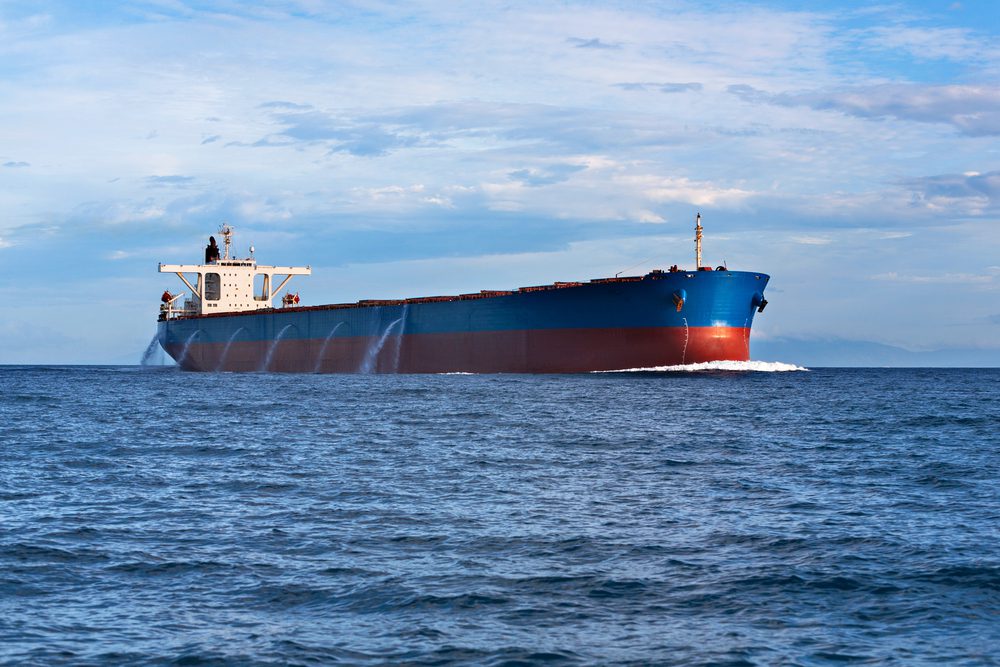By Manisha Jha
(Bloomberg) — Investors betting that China’s near- insatiable appetite for industrial raw materials will drive global economic growth may want to skip the shipping news.
For the first time in at least a decade, combined seaborne imports of iron ore and coal — commodities that helped fuel a manufacturing boom in the world’s second-largest economy — are down from a year earlier. While demand next year may be a little better, slower-than-anticipated growth in 2015 has led to almost perpetual disappointment for shippers, after analysts’ predictions at the end of 2014 for a rebound proved wrong.
The world has surpluses of everything from corn to crude oil, and commodity prices are heading for their biggest annual loss since the financial crisis. With China’s economy expanding at the slowest pace since 1990 demand has ebbed from one of the biggest importers. The Baltic Dry Index of shipping rates for bulk materials fell to an all-time low last month, turning those who watch the industry increasingly bearish.
“For dry bulk, China has gone completely belly up,” said Erik Nikolai Stavseth, an analyst at Arctic Securities ASA in Oslo, talking about ships that haul everything from coal to iron ore to grain. “Present Chinese demand is insufficient to service dry-bulk production, which is driving down rates and subsequently asset values as they follow each other.”
Growth Reversal
China produces about half the world’s steel. The metal is made from iron ore in furnaces fueled by coal, which also is used to run power plants. While domestic mines supply both raw materials, it isn’t enough, so the country must buy from overseas. As the economy surged over the past decade, imports of iron ore tripled, and coal purchases rose almost four-fold since 2008, government data show. The country accounts for two in every three iron-ore cargoes in the world, and is the largest importer of soybeans and rice.
But this year, demand has slowed. Combined seaborne imports of iron ore and coal will drop 4.8 percent to 1.097 billion metric tons, the first decline since at least 2003, according to data from Clarkson Plc, the biggest shipbroker. A year ago, Clarkson was anticipating a 5.5 percent increase for 2015. The broker expects growth to increase just 0.04 percent next year.
It may get worse. The China Iron and Steel Association predicted crude-steel output will tumble by 23 million tons to 783 million tons next year. That lost output is more than a quarter of what U.S. steelmakers produce.
The Baltic Dry Index slumped to 504 points on Nov. 19, the lowest since 1985. It has subsequently advanced to 534 points. While rates for iron ore-carrying Capesize ships normally rise at the end of the year, owners are bracing for the weakest fourth quarter since 2001, Baltic Exchange data show.
Estimates Revisited
At the end of last year, shipping analysts forecast rates for Capesize-class vessels would jump by about a third in 2015. Instead, they’re now expecting a decline of about that magnitude.
Imports are weakening even as China’s economy keeps expanding because of reduced spending by local governments that are dominant players in the economy, according to Fielding Chen, a Hong Kong-based economist for Bloomberg Intelligence. The central government in January withdrew guarantees for Local Government Financing Vehicles used to finance infrastructure projects during the country’s boom years, when domestic capacity surged over the past decade, he said.
“This has reduced China’s appetite for steel and copper and other commodities that are used to build roads, subways and reservoirs,” Chen said. “It is not good for the economy and is one of the main reasons China cannot import more.”
Glut of Ships
Economic growth, which is still about half its pre-2008 peak, is also being propped up by increased consumption and services, and a higher rate of spending by the central government, he said.
Sliding Chinese demand is just part of the reason for the slump in freight rates. There are also more ships, and low scrap-steel prices have discouraged demolitions of older vessels, according to Nigel Prentis, the head of consultancy at Hartland Shipping Services Ltd. in London. The fleet will expand 4.1 percent next year compared with an expansion in demand for dry-bulk commodities of 1.6 percent, estimates Clarkson.
“A lot of people ordered vessels believing in the continued growth in Chinese imports,” said Erik Folkeson, an analyst at Swedbank First Securities in Oslo. “When that failed to materialize, utilization level dipped. I struggle to see the big triggers for a recovery.”
The Twilight Zone
The rout in buying showed signs of easing last month. China’s iron-ore imports rose to 82.13 million tons, a jump of 22 percent compared with a year earlier. Even so, the extra shipments are mostly because of rising Chinese steel exports, rather than the nation’s own demand, according to Andy Xie, an independent economist who predicted in February that iron-ore prices would sink into the $30s this year, compared with $71 at the start of the year.
Chinese steel mills have been pressured by losses, low prices and overcapacity as demand drops to levels unseen since 2009, cutting profits and reducing incentive for re-stocking.
“China’s slowdown has come as a major shock to the system,” said Hartland Shipping’s Prentis. “We are now caught in the twilight zone between shifts in China’s economy, and it is uncomfortable as it’s causing unexpected slowing of demand.”
–With assistance from Naomi Christie.
©2015 Bloomberg News
Unlock Exclusive Insights Today!
Join the gCaptain Club for curated content, insider opinions, and vibrant community discussions.

 Join The Club
Join The Club







![A screengrab of a map showing an earthquake Mindanao, Philippines on Dec 2, 2023. (Image: US Geological Survey [USGS])](https://gcaptain.com/wp-content/uploads/2023/12/Screenshot-2023-12-02-at-10.45.17-AM-copy.png.webp)





